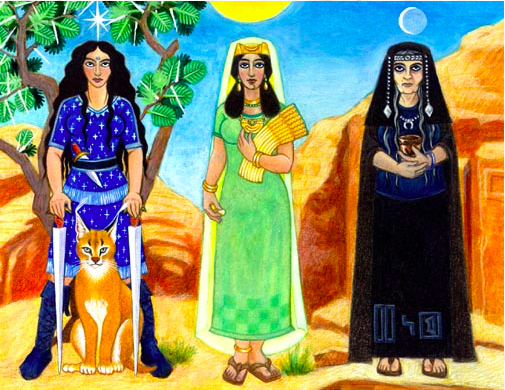Satanic Verses – The origin explained through Islamic History


The book by Salman Rushdie which nearly got him killed last week, talks about some imaginary characters who dealt with the ideology of Islam in their own individual ways. The name of the book however, is very original. The Satanic verses or शैतानीआयात, as they were hatefully called within the Muslim community when the book came out, are present in the most authentic literatures available on the life of Prophet Muhammad. The incident revolving around Satanic Verses is mentioned by Ibn Ishaq, the historian who compiled Al-Sira al-Nabawiyya(Life of the Prophet) after collecting various oral traditions and Hadith. According to the book, Muhammad was very distressed about the behavior of the people around him, as they were not listening to the truth he brought to them. It was a regular practice for him to gather people and give them talks about the latest verse brought to him by Jibraeel. When many of these meetings did not bring the required results, Muhammad started thinking in his desperation, as to how he could achieve a breakthrough. As was his practice, he meditated over the issue and verily received an answer in terms of a revelation. Next time when he was narrating some verses from Chapter 53 – The Star, The Unfolding- to the people, one verse was like this:
“Have you thought of Al-Lat Al-Uzza and Al-Manat, these are murtis with neck like cranes, and their intersection is approved.”
Al-Lat, Al-Uzza and Al-Manat were the three Devis worshipped by the people of Makka. They formed a triad in pre-Islamic Arabia. They were widely worshipped: from Nabatean Petra in the North to the legendary Kingdoms of Arabia Felix in the South, including Saba, the Biblical Sheba; as far east as Iran and Palmyra; and the three of them were very popular Goddesses in Mecca at the time of Mohammed.
When Prophet Muhammad’s kinsman, the Quraysh, heard that Muhammad is talking in an approving manner about their Devis, they got really happy. Then came a point when Muhammad prostrated to what he had just said, and the people present around him also prostrated with him. Prostrating during the recitation of Quran is mandatory at 15 places, and this is done by all followers of Allah. By prostrating at the time, the Quraysh essentially came into the fold of Islam. So in essence, in order to placate the Kuffar of Makka, Muhammad ‘received’ a verse which was praising Pooja to the 3 Devis, a practice which is the epitome of all things Haram in Islam. A large number of Quraysh then accepted Islam. After some time, Muhammad received another visit from Jibraeel who reprimanded Muhammad. Jibraeel told Muhammad that the verse was not brought by him and thus was not the word of Allah, but it was Shaitan who committed the mischief of putting this verse among the prophecies. Prophet Muhammad greatly repented and Allah rescued him by ensuring that the verse commending the three Devis was annulled from the chapter. Instead, a new verse was sent by Allah which explained that Shaitan made the mischief of inserting something in the prophecy which was not sent by Allah. The same mischief is also mentioned in Chapter 22 The Pilgrimage. So, the Satanic verse was thus introduced to Quran for a brief period and in the process, many Quraysh were coerced into becoming Muslims. The background of these Satanic verses is also explained in The History of Al-Tabari Volume 6, page 108 – 110. According to Islamic historians, there was only one verse which came about in this fashion, not verses, but Salman Rushdie took the liberty to expand on this because after all, his book is also a work of fiction.
DISCLAIMER: The author is solely responsible for the views expressed in this article. The author carries the responsibility for citing and/or licensing of images utilized within the text.
